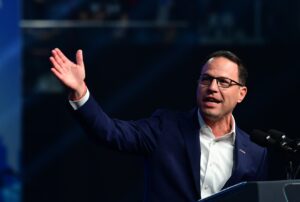
The electrification of fleets continues to advance rapidly, unimpeded by recent legislative challenges in the United States. Despite the introduction of the new “OBBA” tax law, which some anticipated might hinder the adoption of electric vehicles (EVs), the momentum behind fleet electrification remains strong. Fleet owners are strategically planning for zero-emission mobility, while automakers respond with a growing array of electric options, and new players in the fleet electrification service sector are emerging to meet demand.
Driving Change in Fleet Management
The movement towards electrifying fleets aligns with the broader global push for carbon accountability. Domestic fleet owners, aware of international market standards, are increasingly adopting technologies that enhance their carbon profiles. This includes not only electric vehicles but also energy-efficient practices in warehouses and other facilities.
In previous years, fleet owners faced significant challenges in analyzing and planning their electrification efforts. Today, however, innovations such as Energy-as-a-Service and Charging-as-a-Service contracts allow businesses to upgrade and replace outdated vehicles without incurring upfront costs. New software tools further assist in pinpointing areas for decarbonization.
One notable entrant in this space is the California-based platform, Gravity. Recently, Gravity launched its “Energy Management Marketplace,” which provides comprehensive energy analysis and identifies actionable steps for businesses. This platform not only covers fleet electrification but also addresses other facets of enterprise energy management, including managing reactive power expenses—a crucial area considering how reactive power maintains the necessary amperage for operations.
Gravity collaborates with partners like TaxTaker and Renew Energy Partners to connect businesses with tax incentives and cost reductions. Additionally, the platform aids customers in procuring high-impact renewable energy certificates (RECs) to support sustainability objectives.
Collaborative Efforts and Innovations
In terms of fleet electrification, Gravity has partnered with Sawatch Labs, a branch of the global fleet management firm WEX. Sawatch Labs specializes in electrification software that employs mile-by-mile predictive analytics to assess EV suitability and cost modeling. Their software, evEZ, introduced in 2017, helps fleet owners analyze the total cost of ownership between internal combustion engine vehicles (ICEs) and EVs.
Furthermore, Sawatch Labs provides tools that enable fleet owners to optimize charging patterns and avoid peak period costs, thus enhancing their operational efficiency. The integration of Sawatch’s software into WEX’s cooperative purchasing contracts, which include over 45,000 member agencies, signifies a potential acceleration in fleet electrification adoption.
As traditional players like Tesla have experienced challenges in capturing the fleet vehicle market, other manufacturers are stepping in to fill the gap. Recently, Rivian announced that its electric delivery van is now available to all fleets after completing an exclusive agreement with Amazon. General Motors (GM) has also formed a partnership with Hyundai to introduce a new electric delivery van tailored for the North American market.
In the heavy-duty segment, companies like ZO Motors from Japan and Mack Trucks are entering the U.S. market with electric truck offerings. The school bus sector presents a particularly promising opportunity for electrification. The public health benefits of reducing emissions from idling buses are significant, especially in urban areas.
First Student, a leading school bus firm, is currently testing electric bus technology in Brooklyn, New York. Last year, they launched “First Charge,” a new initiative aimed at lowering the costs of installing charging stations for electric buses. These efforts not only enhance sustainability but also create opportunities for buses to serve as energy storage units.
As the fleet electrification movement progresses, partnerships are becoming increasingly important. For instance, Pacific Gas and Electric Company recently collaborated with the Fremont Unified School District and EV charging management firm The Mobility House to launch a new fleet of electric school buses featuring advanced vehicle-to-grid technology. These buses can discharge their batteries during peak demand periods, acting as critical support for the grid.
Despite the uncertain landscape of U.S. vehicle electrification policy, the fleet electrification movement is gaining momentum. The ongoing innovations in technology and partnerships are paving the way for a more sustainable and efficient future in fleet management.






